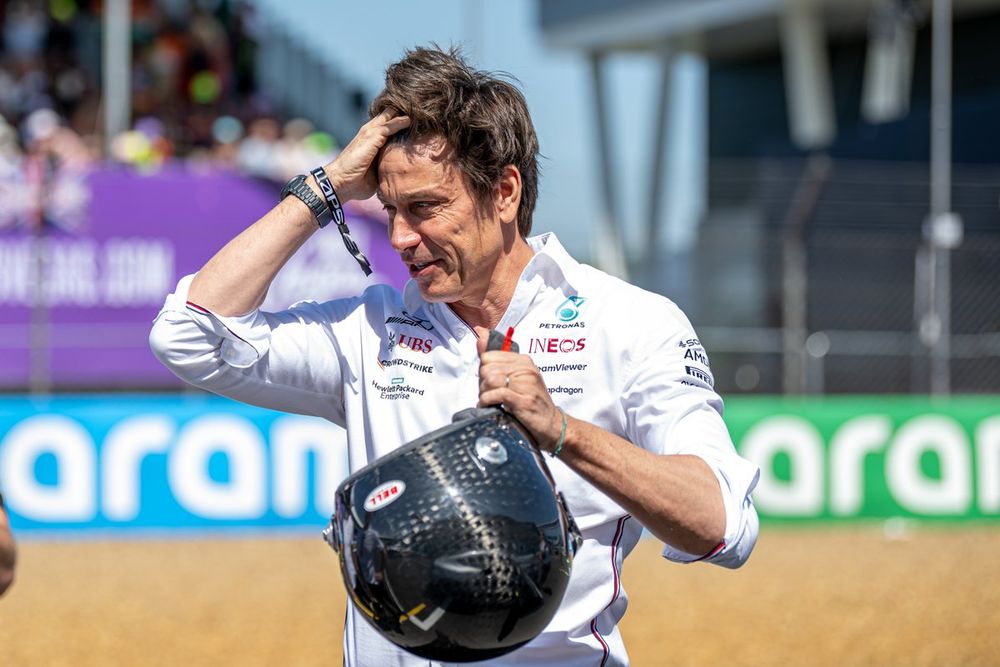
The German manufacturer secured its first pole position of the season at last weekend’s Hungarian Grand Prix, when Lewis Hamilton beat Max Verstappen to the front spot on the grid by 0.003 seconds
However, Hamilton’s Mercedes W14 was no match for Verstappen’s Red Bull in the race, and he fell down the order to finish fourth by the chequered flag - almost 40 seconds adrift of the winner.
With Verstappen in a complete class of his own, ending the Hungaroring race 33s ahead of Lando Norris’s McLaren, it remains clear that Red Bull’s rivals need to make a big step forward with their cars this winter.
Mercedes has already spoken of some fundamental changes being made for its W15, and team boss Toto Wolff has now opened up about just how different things could be.
Speaking about the differences that are being worked on for 2024, Wolff said that detailed analysis was ongoing about the different ideas that were being put to use by other teams.
“I think we need a lot of changes in 2024, and the direction our team is developing is really quite interesting,” he explained.
“We see opportunities and we are not shying away [from anything]. We are leaving no stone unturned, and looking at every single concept that we've seen on other cars.
“That is whether that's powerful or not, and whether it's of any use for us, without letting ourselves be distracted from the way we operate, and the way we analyse. We are going to come up good.”

While outside talk of concept change at Mercedes in the past has mainly revolved around its sidepod design, the team’s engineers view things slightly differently.
Instead, their idea of a concept change revolves around the set-up and operating window of the car, and especially where it runs in relation to the track surface.
Its W13 car was hampered by it being targeted to run as close to the ground as possible, which proved impossible to manage because of the porpoising phenomenon.
The team took a completely different approach for this season, but its effort to run the car at a higher operating window, triggered in part by a 15mm raising of floor edges, proved too cautious as it did not produce enough downforce compared to rivals who were running much lower to the ground.
Modifications made to the car at the Monaco Grand Prix, which included it changing sidepods to ensure that its ‘zero-pod’ concept was not a factor in its lack of performance, have addressed some of its shortcomings but it knows more gains are needed.
Wolff explained how losing races in the way it did against Red Bull in Hungary was something that left the team with no excuses.
“When you are having a car in the front that is 38 seconds ahead [of Hamilton] and probably it was cruising a long time for that, it's a bitter reality,” he said.
“But it's a meritocracy and as long as you're moving within the regulations, then you know you have overall done a better job. We just need to acknowledge that.”







